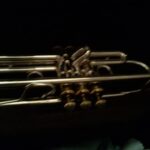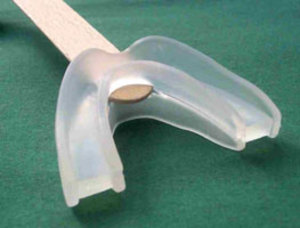Whether you’re a beginning, intermediate, or advanced clarinet player, reviewing the basics of proper embouchure formation (how the oral structures are formed around the mouthpiece and reed) is always helpful to your playing.
We must always keep in mind the the purposes of the embouchure:
1) To add resistance to the reed to produce and control tone production
2) To facilitate efficient air flow across the reed
3) To make small adjustments of timbre and intonation while playing
A proper clarinet embouchure is often described as having firm lips, a flat and pointed chin, and an open jaw. These are true descriptions, but it is more helpful to know how it feels rather than how it should look.
To get a relatively close idea of what a good clarinet embouchure feels like, pretend to be sucking a very thick milkshake through a regular-sized straw. You’ll notice that your lip muscles (which is really one connected band of muscle) draw together firmly around the make-believe straw. The point of the chin is drawn downward, and thus the the chin is flattened (as opposed to bunching up). The advantage of this formation is that when it is consistently applied to the clarinet mouthpiece and reed combination, the reed is free to vibrate rather than being pinched by a jaw that is further closed or muffled by “mushy” lips.
To insert the clarinet into the mouth, you’ll probably need to open your mouth a little wider now, but maintaining a similar feeling of the muscle tension. This can be done by lowering the jaw more or saying something akin to the syllable, “mew” as in “MUsic.” Start by inserting the clarinet at a very large angle to the body, even nearing perpendicular. Place the top teeth on top of the clarinet mouthpiece if you wish (or play double lip, in which the top lip covers the top teeth in almost a mirror image of how the bottom lip and teeth function–very helpful technique in preventing reed-pinching). Before you bring the clarinet down to a more appropriate angle, go ahead and blow into the clarinet through your basic embouchure setup. Keep your jaw open. This should sound terribly flat and unfocused. Once you’re making some noise, do the following things to add focus and clarity to the sound:
1) Bring the clarinet angle down to somewhere between 25-45 degrees to the body, or whatever works best for you
2) Firm up the corners of your mouth even more
3) Aim your air upward in the direction of your nose; or, think of blowing “eeh” or “heeh” rather than “ahh” or “oh.” This should cause you to raise the back of your tongue, which radically speeds the air rushing toward the reed
These three things should bring your tone into clarity, center, focus, and decent pitch. Do this beginning exercise on an open G, first-finger chalumeau E, or a top-of-the-staff F.
Once you’ve done this several times, articulate the note you play a few times. This will tell you whether you need to adjust the position of your lower lip on the reed. As a general rule, the reed should contact the lower lip at the point where the reed begins separating from the facing of the mouthpiece. The reed works like a lever, and this point on the reed is called the “fulcrum.” If your lower lip contacts the reed above the fulcrum point, you’re essentially clamping the reed down and disallowing it to vibrate freely. The result will be lack of amplitude and color in the sound, in addition to weak and/or sluggish response when articulating.
The upper and lower portions of the embouchure should never be directly opposite each other. The upper part should be very close to the top of the mouthpiece, and the lower part should be positioned considerably far down on the reed. In fact, the higher up the upper teeth are on the mouthpiece, the more compact and controllable is the sound that tends to be produced, especially in the high register. The goal is a kind of indirect force applied to the reed on the stronger portion of the reed (the lower half of the blade) which is below the fulcrum point on the mouthpiece.
Several other things to keep in mind:
1) If you follow the above guidelines, enough air pressure and resistance will be applied to the reed that you should not need to tense up your jaw or anything in your throat in order to gain a focused and clear sound. In fact, your throat should be so free that if you were to relax it any more, air would escape through your nostrils as you played; to have air escaping thusly is not the goal, but relaxation of the throat should approach this magnitude.
2) While you should generally keep your embouchure stable and motionless as you move across notes, articulation styles, and even registers, you should also aim for a certain amount of flexibility in your embouchure–it shouldn’t be 100% rock solid, just very, very firm. There may also be times when you wish to intentionally alter pitch or timbre by decreasing or increasing tension in different parts of the embouchure.
3) Embouchure is merely a gateway for efficient air use; quality woodwind-playing depends mainly on good air support and control.
4) Reed quality is taken for granted in these instructions, but obviously a good reed plays better than a bad reed. Also, bad reeds, and bad equipment in general, can foster bad playing habits, so consult teachers or more experienced players when buying and adjusting equipment.
5) You can use a mirror to watch and make sure your embouchure is staying still as you play.
Happy clarinetting!




